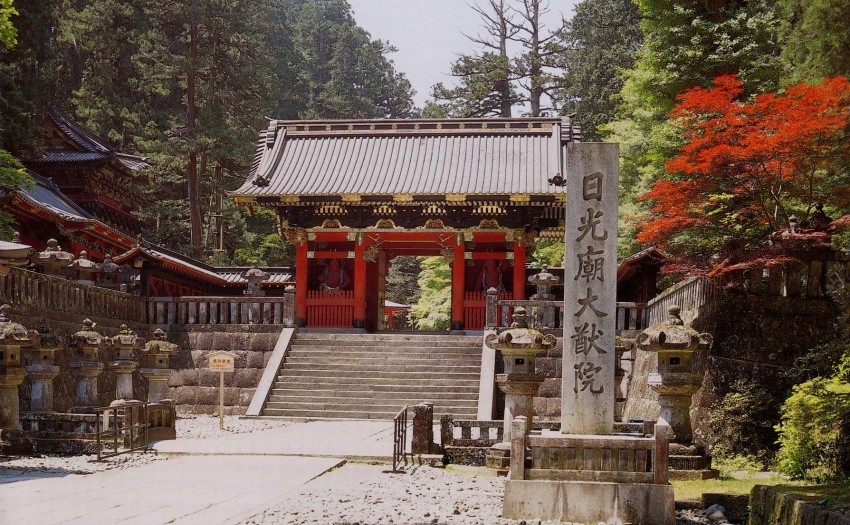
Nikko-san Rinnoji Temple's Taiyuinbyo Shrine was built by the fourth generation Tokugawa Shogun, Tokugawa Ietsune as a mausoleum for the third Shogun, Tokugawa Iemitsu. There are many national treasures and important cultural assets within the shrine-temple hybrid, and it is a must-see sightseeing spot in Nikko, along with other famous sites such as Nikko Toshogu Shrine. We will introduce the history and highlights of Taiyuinbyo Shrine in this article.
About Nikko-san Rinnoji Temple's Taiyuinbyo Shrine
Taiyuin was the name given to Iemitsu by buddhist monks, and the shrine was built merely in 1 year and 2 months by the fourth Tokugawa Shogun, Tokugawa Ietsune. Compared to Nikko Toshogu, where Tokugawa Ieyasu is enshrined, the sculptures and coloring are modest, due to the will of Iemitsu saying that "It shall not surpass Toshogu." It is solid and calm, using a lot of gold and black tones.
Besides the main shrine, the hallway, and the worship hall, which are designated as national treasures, there is also the magnificent Nitenmon Gate, the Koukamon Gate which is reminiscent of Ryugo Castle, the Yashamon Gate, and many other highlights. Visit and behold the sight of the gates with beautiful architecture and colourful buddhist statues.
Nikko san Rinnoji Temple's Taiyuinbyo Shrine Highlight 1: The Nioumon Gate
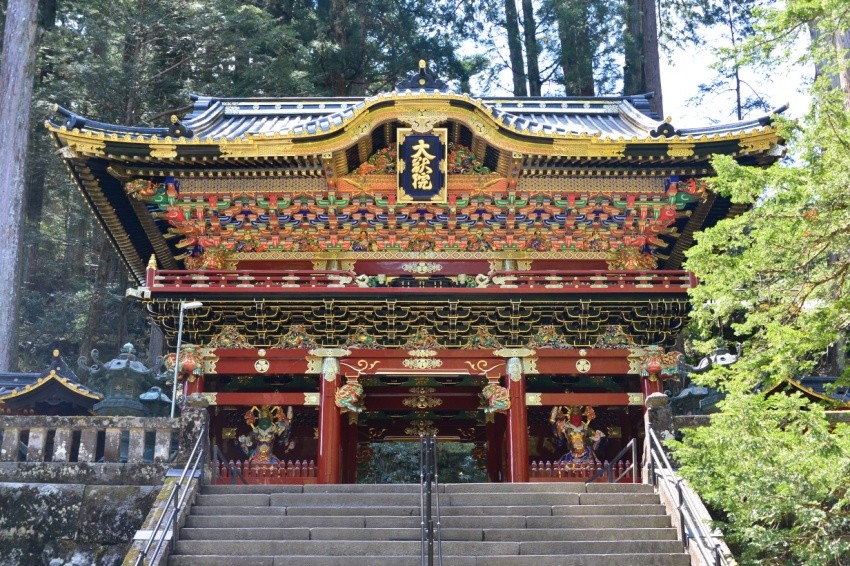
The Nioumon Gate has two Niou (guardian god) statues. After entering the shrine grounds, the first gate you encounter stands 2 guardian god statues that measure 3.2 meters tall, on either side of the gate. The guardian statues' mouths make the shape of "A" and "Un", which are said to represent the beginning and end of things. The saying "Aun's Breath" which refers to when two or more people try to sync up their timing while doing something is said to originate from these two statues.
Nikko san Rinnoji Temple's Taiyuinbyo Shrine Highlight 2: The Yashamon Gate
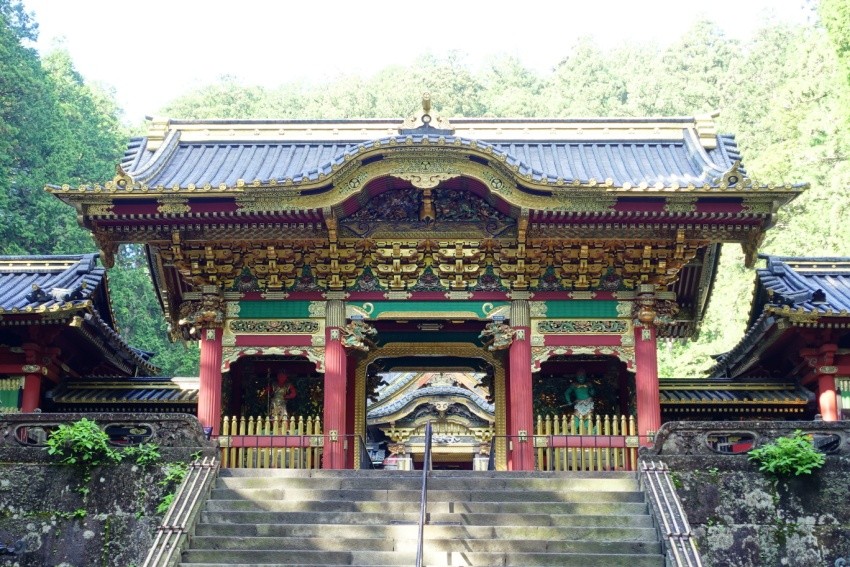
The second thing to see is the Yashamon Gate, in front of the Karamon Gate, which has a beautiful and stunning atmosphere. The gabled roof which sweeps down towards the ground on both sides, is also known as the Kirizuma style, and is decorated in gold, black, and vermilion. On the front and back of the gate are 4 statues of man-eating demons, in green, red, white, and blue to represent north, south, east, and west. Because there are botan flowers (peonies) carved on the gate, it is sometimes called the Botanmon Gate (Peony Gate).
Nikko san Rinnoji Temple's Taiyuinbyo Shrine Highlight 3: Worship Hall, Hallway and Main Hall
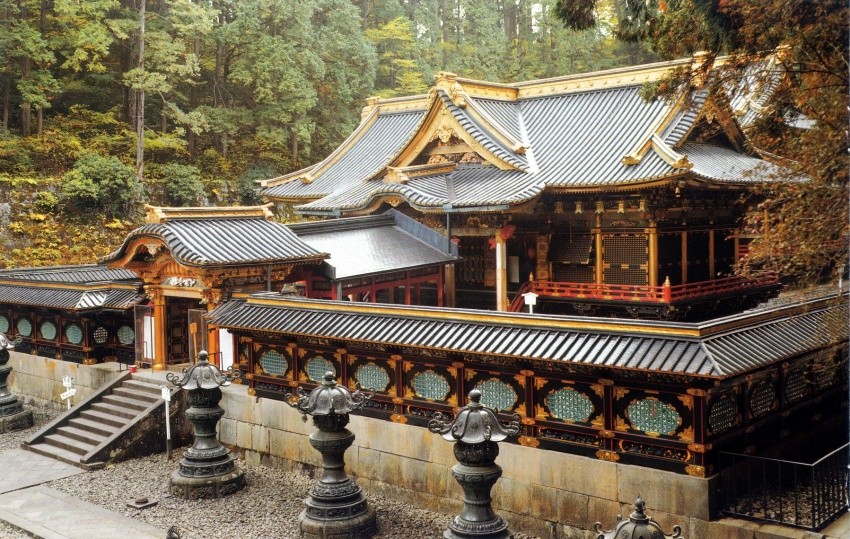
Because a large amount of gold is used to decorate the central building of Taiyuinbyo Shrine, it is also called the Golden Hall and is designated as a national treasure. It has a unique structure, which is called the Gongen style, where the main hall is connected to the worship hall by a room that acts as a hallway. Inside, there are early Edo Period paintings, including a Chinese-style lion painted by Kano Tanyu, and there are 140 dragons painted on the ceiling, all of which are must-see. Also on display is a suit of armor worn by Tokugawa Iemitsu.
Access to Nikko san Rinnoji Temple's Taiyuinbyo Shrine
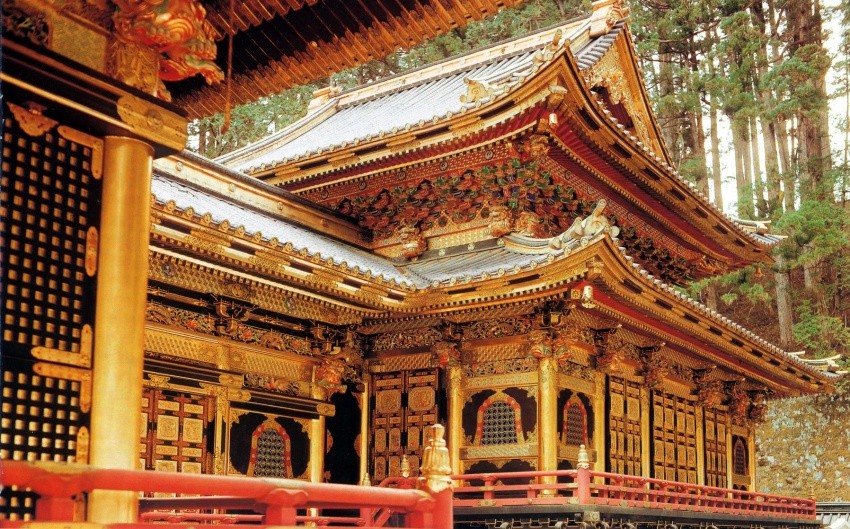
Take the Tobu World Heritage Sightseeing Bus from JR / Tobu Nikko Station, get off at the "Taiyuin-Futarasan-Jinja-Mae" (大猷院 二荒山神社前) bus stop, and it's just a short walk from there.
Spot Information
- Spot name: Nikko san Rinnoji Temple's Taiyuinbyo Shrine
- Street Adress: 2300 Yamauchi, Nikko-shi, Tochigi 321-1431
- Access: See above
- Ticket: 550 yen, or set ticket 900 yen for Rinnoji Sanbutsudo, and Taiyuinbyo
- Opening Hours: April~October: 08:00-17:00, November~March: 08:00-16:00 (last entry is 30 minutes before closing)
- Holidays: None. Open year-round
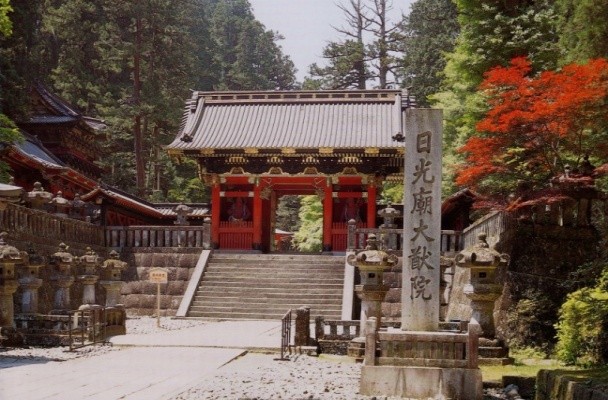

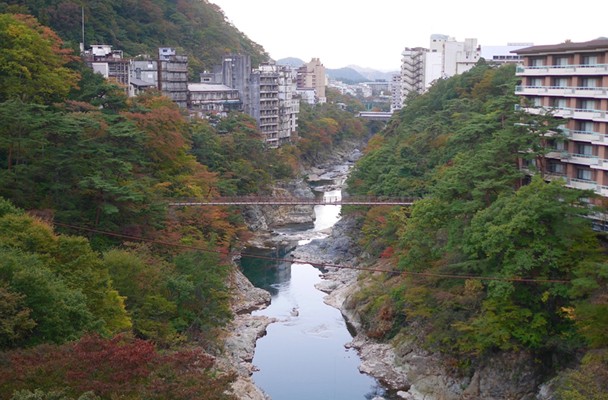
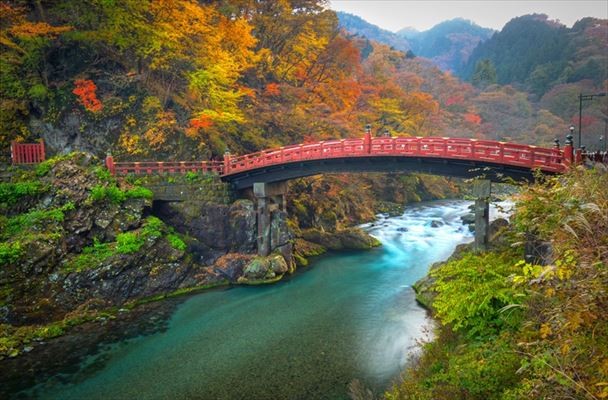
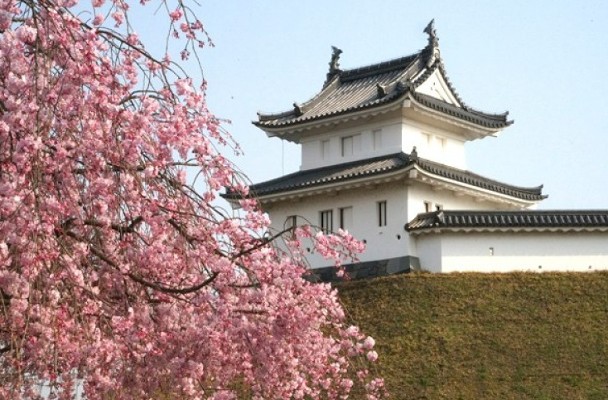
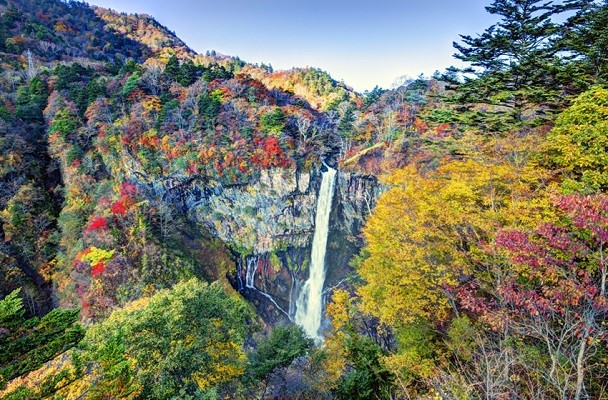
Comments